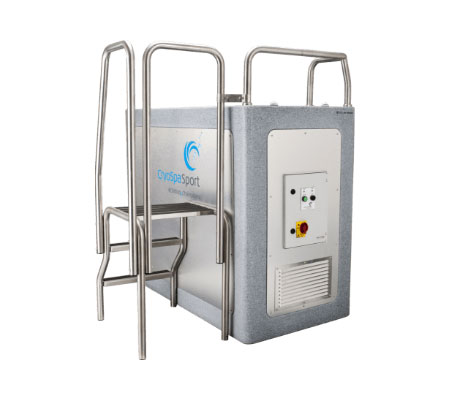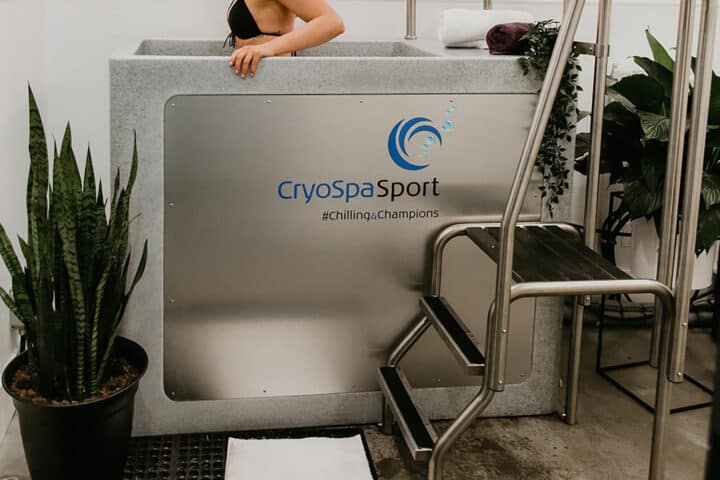On the pitch, footballers perform around 700 changes of direction. In addition, during the 90 minutes of play, they will also cover over 10 kilometres during the game. Because of this, football players need a large anaerobic capacity to cope with running at high-intensity and sprinting speeds. They also need a strategy to help them recover from this, one of which is cold water immersion in an ice bath.
Recovery for football players
Footballers not only have to train hard to achieve a high level of stamina but they also need time to recover. With training intensity periodised into a high and low volume, recovery will need to be timetabled too.
Heads of Sports Medicine frequently have to confront muscle and tendon injuries in football players. But fatigue is also a major cause of injury. A player may not feel tired on the pitch, but even a short lapse in concentration can mean being caught in a tackle. In turn, this could result in injury. Ice baths help the body to recover from fatigue and are therefore central to recovery, helping players stay match-fit. In fact, a review of recovery strategies finds that “cold water immersion is effective during acute periods of match congestion in order to regain performance levels faster and repress the acute inflammatory process.”
Furthermore, fatigue will inhibit performance. Consequently, by helping players recover from fatigue and injury, performance will improve.
Why football players take an ice bath
In football medicine, prevention, diagnosis, treatment and rehabilitation are constant topics of discussion.
At the 2013 FIFA sponsored Sports Injury Summit in Wembley, Gregory Dupont of Université de Lille gave a presentation highlighting the strong correlation between fatigue and injury. In fact, the main precursor of injury is fatigue. This became clear in his report that injury rate was 6.2 times higher in players who played two matches per week, compared to those who played only one.
One of the best strategies for minimising fatigue is an ice bath. In fact, not only does it minimise fatigue, but it also reduces the risk of injury and aids recovery. Other recovery strategies include a healthy diet, quality of sleep and good hydration.
Ice bath without ice
Originally, ice bath therapy will have used actual ice. But the problem with using ice is that it melts. Therefore, to maintain a cold temperature for any length of time using ice will require constant replenishment of ice. However, even that isn’t ideal. Cold water will float to the top of the bath unless the water is constantly moving. But this makes sitting in an ice bath absolutely intolerable. In addition, the recognised therapeutic tissue temperature is 12C to 15C, which isn’t achievable in a traditional ice bath.
CETCryoSpas do not use ice but instead use a digitally controlled chiller. This maintains a pre-set temperature throughout the therapy session. Additional features, such as jets, allow for both conduction and convection (wind chill). Consequently, tissue is chilled to the therapeutic level.
In fact, CryoSpa is the premier ice bath solution that many football clubs – and other sports and institutes – use for effective ice bath recovery, including:
- AC Milan
- Manchester United
- Manchester City FC
- Team GB (London 2012)
- The English Institute of Sport
- Wimbledon





https://pubmed.ncbi.nlm.nih.gov/23046224/ https://pubmed.ncbi.nlm.nih.gov/23315753/ https://pubmed.ncbi.nlm.nih.gov/20400751/